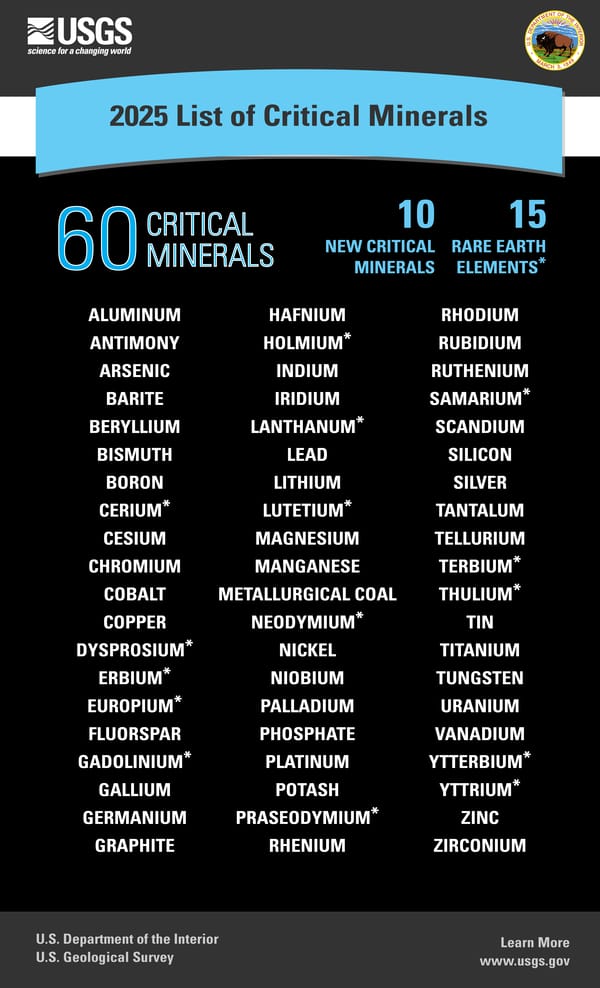The U.S. government has unveiled its most sweeping update yet to the Critical Minerals List, officially designating 60 minerals as vital to the nation’s economy, energy systems, and defense base. The expansion — announced by the U.S. Geological Survey (USGS) and Department of the Interior on November 7 — marks a turning point in how Washington defines “criticality” amid escalating global competition for raw materials.
Additions Reflect Broader Energy and Defense Strategy
The 2025 update adds six minerals—uranium, metallurgical coal, phosphate, arsenic, boron, and tellurium—to the existing list. The move reflects recommendations from the Departments of Energy, Defense, and Agriculture, all of which emphasized the strategic and industrial importance of these resources.
Uranium’s inclusion marks a significant policy reversal, recognizing its role in both national defense and the expansion of nuclear energy. Metallurgical coal, essential for steelmaking, was also reinstated under the Trump administration’s clean coal revival agenda. The Department of Agriculture pushed for phosphate’s inclusion, citing its indispensability to U.S. food security and fertilizer production.
Meanwhile, arsenic and tellurium—initially slated for removal—were retained following defense and energy agency input highlighting their relevance in semiconductors, solar panels, and military technologies. Boron joined the list after new data confirmed high Chinese market concentration in ferroboron and related alloys.
Silver’s addition marks a striking shift. Widely used in electronics, solar panels, and defense, it’s also a key investment and industrial metal.
Interior Secretary Doug Burgum described the list as a “data-driven roadmap to reduce dependence on foreign adversaries and unleash American innovation,”

Source: USGS
How the USGS Determined What’s “Critical”
The USGS used an upgraded methodology to identify minerals vital to the U.S. economy and defense industrial base. The approach simulated more than 1,200 potential supply chain disruption scenarios covering 84 mineral commodities and 402 downstream industries.
The assessment focused on two primary criteria: the potential economic impact of a foreign trade disruption and whether a mineral’s supply chain relied on a single domestic producer—a single point of failure. The result is a dynamic, data-driven model designed to be updated every two years in response to shifting market and geopolitical realities.
From Green Tech to Industrial Resilience
The 2025 Critical Minerals List marks a noticeable policy shift. Earlier lists, including the 2022 version, emphasized minerals central to the energy transition—lithium, cobalt, nickel, and rare earth elements. The 2025 revision, however, broadens the definition of “critical” to encompass industrial, agricultural, and defense-linked resources such as coal, phosphate, and uranium.
This reflects a recalibration of priorities: ensuring supply chain resilience across both traditional and emerging sectors. The inclusion of uranium and metallurgical coal aligns with the administration’s energy dominance agenda, while phosphate and boron point to a renewed focus on food and manufacturing security.
Source: Federal Register, November 7, 2025 — “Final 2025 List of Critical Minerals” (90 FR 50494); U.S. Geological Survey Open-File Report 2025-1047.